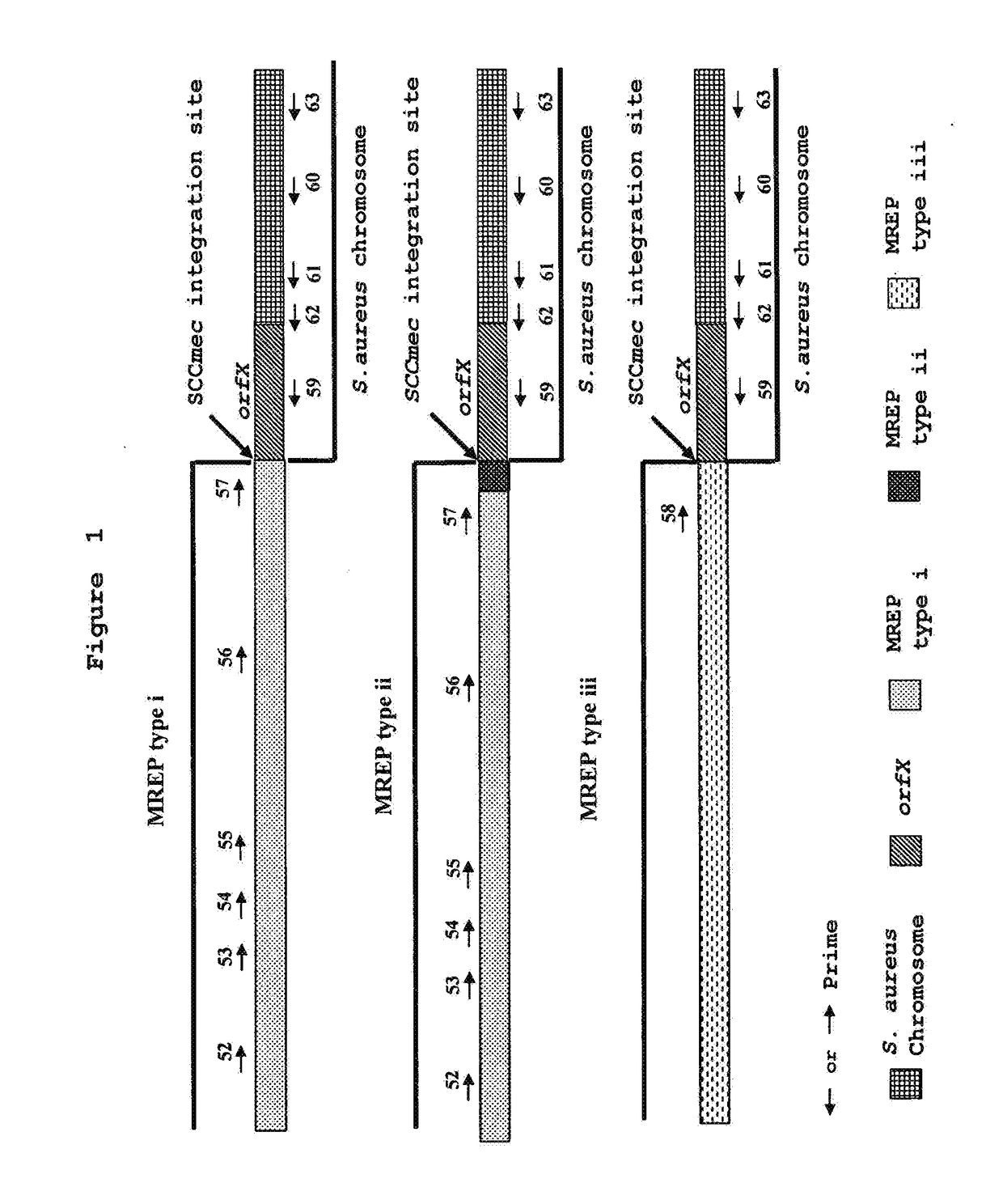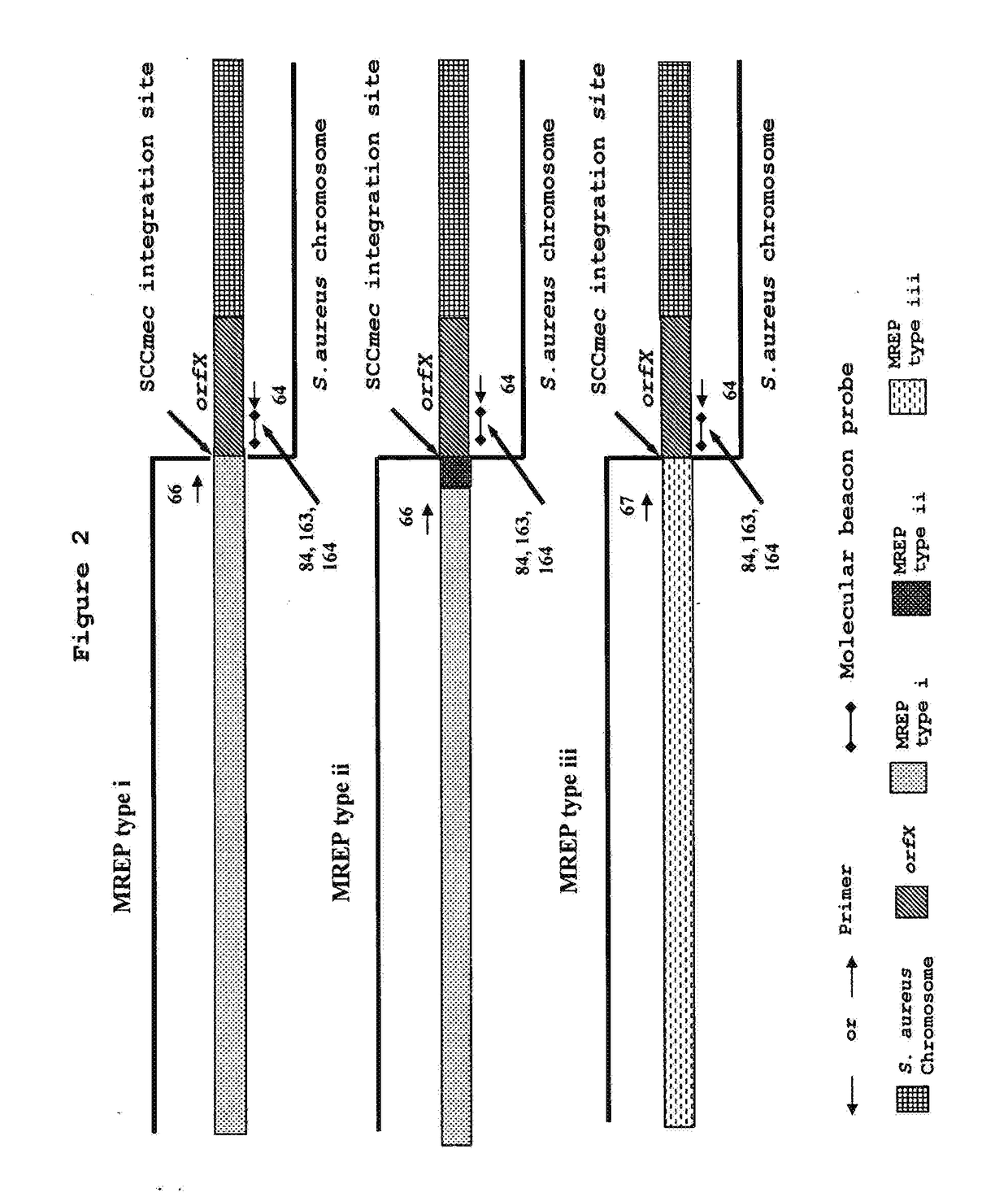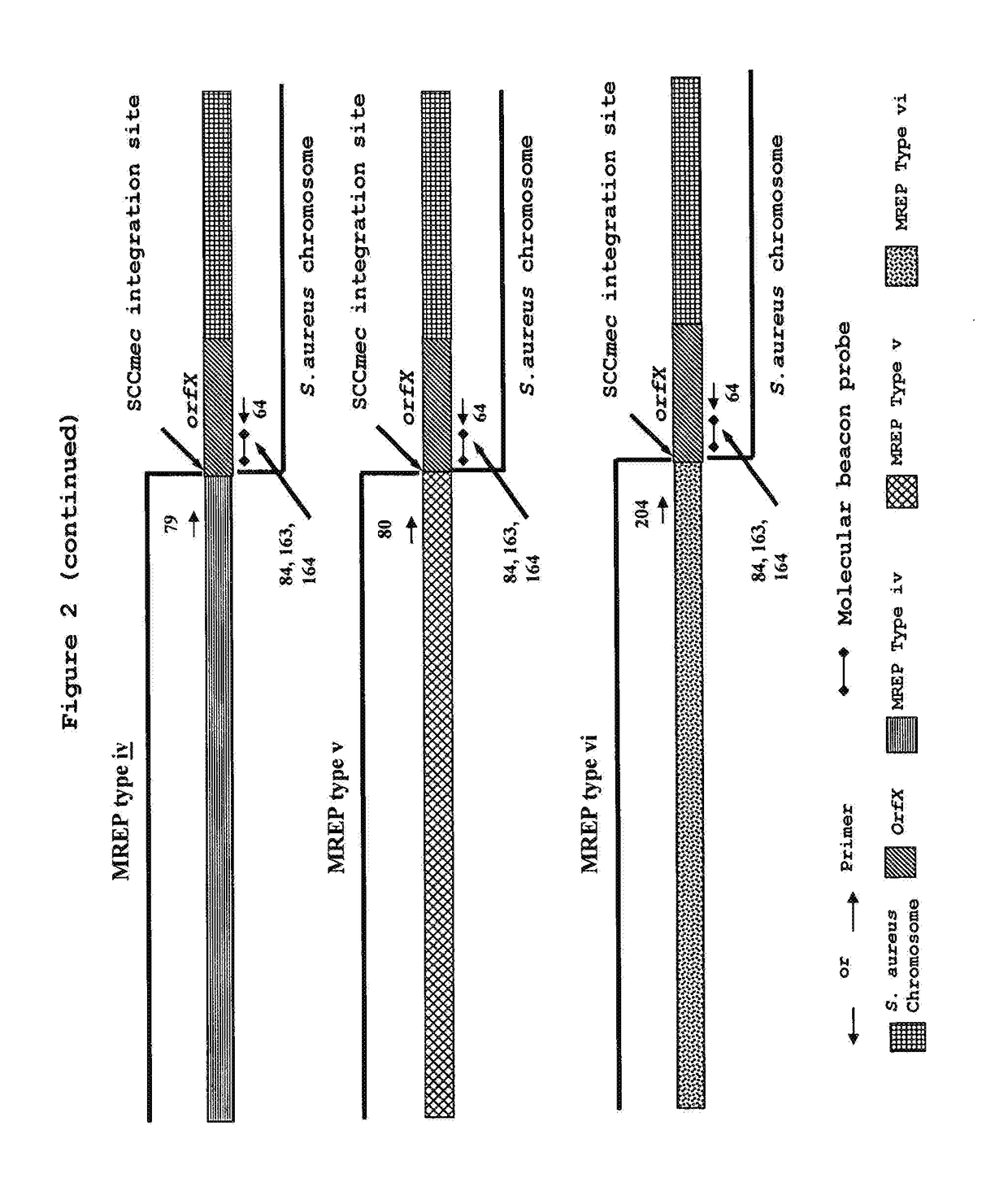Method for the detection and identification of methicillin-resistant staphylococcus aureus
a staphylococcus, methicillin-resistant technology, applied in the field of methicillin-resistant staphylococcus aureus detection and identification, can solve the problems of not being able to detect all mrsa, unable to treat mrsa infections with more toxic and expensive drugs, and unable to achieve the detection of all mrsa
- Summary
- Abstract
- Description
- Claims
- Application Information
AI Technical Summary
Benefits of technology
Problems solved by technology
Method used
Image
Examples
example 1
[0189]Primers Developed by Hiramatsu et al. can only Detect MRSA Strains Belonging to MREP types i, ii, and iii while Missing Prevalent Novel MREP types.
[0190]As shown in FIG. 1, Hiramatsu et al. have developed various primers that can specifically hybridize to the right extremities of types I, II and III SCCmec DNAs. They combined these primers with primers specific to the S. aureus chromosome region located to the right of the SCCmec integration site for the detection of MRSA. The primer set (SEQ ID NOs.: 22, 24 and 28 in U.S. Pat. No. 6,156,507 corresponding to SEQ ID NOs.: 56, 58 and 60 in the present invention) was shown by Hiramatsu et al. to be the most specific and ubiquitous for detection of MRSA. This set of primers gives amplification products of 1.5 kb for SCCmec type I, 1.6 kb for SCCmec type II and 1.0 kb for SCCmec type III (Table 7). The ubiquity and specificity of this multiplex PCR assay was tested on 39 MRSA strains, 41 MSSA strains, 9 MRCNS strains and 11 MSCNS s...
example 2
[0193]Detection and Identification of MRSA using Primers Specific to MREP Types i, ii and iii Sequences Developed in the Present Invention.
[0194]Based on analysis of multiple sequence alignments of orfX and SCCmec sequences described by Hiramatsu et al. or available from GenBank, a set of primers (SEQ ID NOs: 64, 66, 67) capable of amplifying short segments of types I, II and III of SCCmec-orfX right extremity junctions from MRSA strains and discriminating from MRCNS (Annex I and FIG. 2) were designed. The chosen set of primers gives amplification products of 176 bp for SCCmec type I, 278 pb for SCCmec type II and 223 bp for SCCmec type III and allows rapid PCR amplification. These primers were used in multiplex PCR to test their ubiquity and specificity using 208 MRSA strains, 252 MSSA strains, 41 MRCNS strains and 21 MRCNS strains (Table 12). The PCR amplification and detection was performed as described in Example 1. PCR reactions were then subjected to thermal cycling (3 minutes...
example 3
[0196]Development of a Multiplex PCR Assay on a Standard Thermocycler for Detection and Identification of MRSA Based on MREP Yypes i, ii, iii, iv and v Sequences.
[0197]Upon analysis of two of the new MREP types iv and v sequence data described in the present invention, two new primers (SEQ ID NOs.: 79 and 80) were designed and used in multiplex with the three primers SEQ ID NOs.: 64, 66 and 67 described in Example 2. PCR amplification and detection of the PCR products was performed as described in Example 2. Sensitivity tests performed by using ten-fold or two-fold dilutions of purified genomic DNA from various MRSA strains of each MREP type showed a detection limit of 5 to 10 genome copies (Table 16). Specificity tests were performed using 0.1 ng of purified genomic DNA or 1 μl of a standardized bacterial suspension. All MRCNS or MSCNS strains tested were negative with this multiplex assay (Table 17). Twelve of the 20 MRSA strains which were not detected with the multiplex PCR desc...
PUM
 Login to View More
Login to View More Abstract
Description
Claims
Application Information
 Login to View More
Login to View More - R&D
- Intellectual Property
- Life Sciences
- Materials
- Tech Scout
- Unparalleled Data Quality
- Higher Quality Content
- 60% Fewer Hallucinations
Browse by: Latest US Patents, China's latest patents, Technical Efficacy Thesaurus, Application Domain, Technology Topic, Popular Technical Reports.
© 2025 PatSnap. All rights reserved.Legal|Privacy policy|Modern Slavery Act Transparency Statement|Sitemap|About US| Contact US: help@patsnap.com



